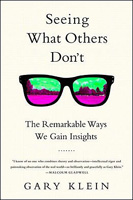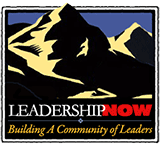 | Leadership and the Art of Struggle: How Great Leaders Grow Through Challenge and Adversity
by Steven Snyder
(Berrett-Koehler Publishers, 2014)
Struggles are an inevitable part of the leadership journey. With every episode of struggle, there is a learning opportunity. Steven Snyder offers insights as how we should accept and reconcile the struggles we experience.(Blog Post)

 More Information on this Book. More Information on this Book.
|
 |
 | The Business of Belief: How the World's Best Marketers, Designers, Salespeople, Coaches, Fundraisers, Educators, Entrepreneurs and Other Leaders Get Us to Believe
by Tom Asacker
(CreateSpace, 2013)
In The Business of Belief, Tom Asacker describes the job of leadership from the perspective of beliefs—yours and theirs. Understanding people‘s beliefs is the first step in leading them. It's a critical message that every leader should read. (Blog Post)

 More Information on this Book. More Information on this Book.
|
 |
 | Eleven Rings: The Soul of Success
by Phil Jackson and Hugh Delehanty
(Penguin Press HC, 2013)
Phil Jackson offers 11 insights that transform ordinary leadership into great leadership. His 11 Principle's of Mindful Leadership are about leading with outgoing concern for others and good character. These principles should be a part of your personal leadership development plan. (Blog Post)

 More Information on this Book. More Information on this Book.
|
 |
 | Die Empty: Unleash Your Best Work Every Day
by Todd Henry
(Portfolio Hardcover, 2013)
Todd Henry asks, “Are we willing to spend ourselves on behalf of something we care about?” Be purposeful about how you spend your time. As many people become more and more successful, comfort becomes their objective. We cannot pursue comfort as an objective. That‘s the path to mediocrity. You cannot pursue comfort and great works simultaneously. Your work should represent what you care about. Will you die full of unexecuted ideas or will you die empty? (Blog Post)

 More Information on this Book. More Information on this Book.
|
 |
 | The Good Struggle: Responsible Leadership in an Unforgiving World
by Joseph L. Badaracco Jr.
(Harvard Business Review Press, 2013)
Underlying your leadership are certain values and assumptions. Leading responsibly and successfully is a struggle. Badaracco poses five questions leaders need to answer. The answers will guide and ground your choices in a world of widely divergent forces. (Blog Post)

 More Information on this Book. More Information on this Book.
|
 |
 | Hacking Leadership: The 11 Gaps Every Business Needs to Close and the Secrets to Closing Them Quickly
by Mike Myatt
(Wiley, 2013)
We all have gaps in our leadership. Hacking Leadership is for leaders who feel that their performance falls short of their potential and who want to know why. Myatt addresses 11 gaps from hacking perfection to hacking the future. He asks, “Do you want to be a leader who simply does what‘s expected, or do you want to be a leader who makes what if a reality?” As a leader, you need to be focused on stretching yourself—hacking your leadership gaps.

 More Information on this Book. More Information on this Book.
|
 |
 | The Myths of Creativity: The Truth About How Innovative Companies and People Generate Great Ideas
by David Burkus
(Wiley, 2013)
Creativity is not as divinely-inspired, unpredictable and random a gift as we tend to think it is. These persistent myths hinder our creativity and limit our ability to produce real creative thinking. Burkus debunks ten of these myths like the Eureka Myth, the Lone Creator Myth, and the Brainstorming Myth, to help us understand how to ignite what is already inside of us.

 More Information on this Book. More Information on this Book.
|
 |
 | Antifragile: Things That Gain from Disorder
by Nassim Nicholas Taleb
(Random House, 2013)
Just as human bones get stronger when subjected to stress and tension, and rumors or riots intensify when someone tries to repress them, many things in life benefit from stress, disorder, volatility, and turmoil. What Taleb has identified and calls—antifragile—is that category of things that not only gain from chaos but need it in order to survive and flourish. Overly protective leadership can lead to more fragile followers. Very practical insights here. (Blog Post)

 More Information on this Book. More Information on this Book.
|
 |
 | Icons and Idiots: Straight Talk on Leadership
by Bob Lutz
(Portfolio Hardcover, 2013)
Bob Lutz offer practical insights into leaders and leadership. Great leaders do not possess all of the ingredients we might think they must. It‘s always a blend of good and bad. But, in Lutz‘s words, the value they bring to the table consistently and heavily outweighs the negative baggage. Very encouraging for us mere mortals.

 More Information on this Book. More Information on this Book.
|
 |
 | Give and Take: A Revolutionary Approach to Success
by Adam M. Grant
(Viking Adult, 2013)
Every time we interact with another person at work, we have a choice to make: do we try to claim as much value as we can, or contribute value without worrying about what we receive in return? In the workplace, says Adam Grant, givers are a relatively rare breed. Are You a Giver or a Taker? (Blog Post)

 More Information on this Book. More Information on this Book.
|
 |
 | Business Secrets of the Trappist Monks: One CEO's Quest for Meaning and Authenticity
by August Turak
(Columbia University Press, 2013)
Business Secrets of the Trappist Monks is about service and selflessness—two foundational ideas of good leadership. A reflective reading of this book will cause you to look more deeply into your own motivations and behaviors, live authentically and lead from who you are. Service and selflessness have the moral force to transcend market forces.

 More Information on this Book. More Information on this Book.
|
 |
 | Seeing What Others Don't: The Remarkable Ways We Gain Insights
by Gary Klein
(PublicAffairs, 2013)
Gary Klein says that organizations stifle insights because we value predictability and crave perfection more than we value the disruption they bring. A better understanding of the nature of insights will help us to welcome them and make better use of them rather than suppressing them before they see the light of day. (Blog Post)

 More Information on this Book. More Information on this Book.
|
BIOGRAPHY

|
 | The Bully Pulpit: Theodore Roosevelt, William Howard Taft, and the Golden Age of Journalism
by Doris Kearns Goodwin
(Simon & Schuster, 2013)
Goodwin explores in detail the communication styles of William Howard Taft and Theodore Roosevelt. Taft‘s failure as a public leader underscores the pivotal importance of the bully pulpit—that “wonderful platform” from which the presidency shapes public sentiment and mobilize action—in presidential leadership. It‘s an engaging story of the relationship between Roosevelt, Taft and the muckraking press.

 More Information on this Book. More Information on this Book.
|
 |
 | I Invented the Modern Age: The Rise of Henry Ford
by Richard Snow
(Scribner, 2013)
This is a well told story of Henry Ford‘s rise from farm boy to one of America‘s greatest industrialists. Snow portrays Ford with all of his strengths and weaknesses and the consequences of each. A study of Ford‘s life provides insights into the world we live in today.

 More Information on this Book. More Information on this Book.
|
 |
 | The Everything Store: Jeff Bezos and the Age of Amazon
by Brad Stone
(Little, Brown and Company, 2013)
The Everything Store is an interesting account of the rise of Amazon and one of the world's leading entrepreneurs, Jeff Bezos. We learn about Bezos: values and vision as well as his blind spots. There are lessons to be learned in all of it.

 More Information on this Book. More Information on this Book.
|
 |

|
 Classic Leadership Books Classic Leadership Books  Best of 2003 Best of 2003  Best of 2004 Best of 2004  Best of 2005 Best of 2005  Best of 2006 Best of 2006  Best of 2007 Best of 2007
 Best of 2008 Best of 2008  Best of 2009 Best of 2009  Best of 2010 Best of 2010  Best of 2011 Best of 2011  Best of 2012 Best of 2012  Best of 2014 Best of 2014
 Best of 2015 Best of 2015  Best of 2016 Best of 2016  Best of 2017 Best of 2017  Best of 2018 Best of 2018  Best of 2019 Best of 2019 |
























